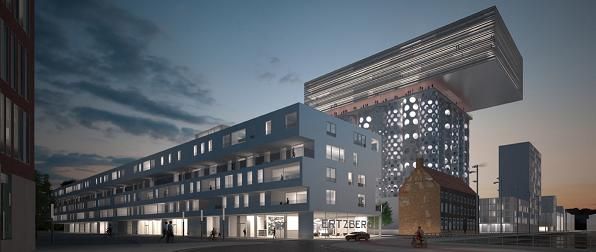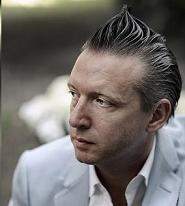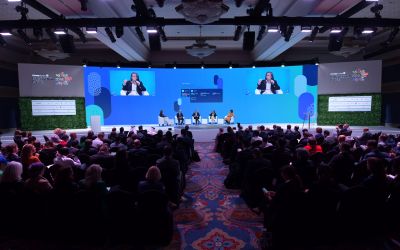A small country, a great example
In Leuven, a small city just a stone’s throw from Brussels, Jo Vandebergh shows Europe how you can score high in terms of sustainability, innovation and social commitment with a vision and entrepreneurship.

Jo Vandebergh works for the urban development firm Ertzberg, where he designs, inspires and serves as a driving force for the team. Our discussion with the always passionate, socially committed and enthusiastic Vandebergh reflects the personality of the CEO - chief enabling officer: it’s a rapid fire discussion barely leaving us the time to actually ask a question.
Vandebergh is the brains behind the holistic vision for ushering Leuven - a provincial capital and renowned university city near Brussels - into the 21st century. Vandebergh helped establish “Leuven Klimaatneutraal 2030” (Leuven climate-neutral 2030) and is the driving before behind the Belgian Sustainable Building Council, a cross-disciplinary knowledge institution that wants to put Belgium on the map of sustainable building. Preferably as prominently as possible.
Why is he so committed to ecological and sustainable social entrepreneurship?
Jo Vandebergh: “Our generation has created an ecological liability, which I feel very ashamed about. I am committed to helping to reduce this ecological liability that was created over several decades. I do this from my own limited perspective and in the knowledge that not everybody is equally committed to change at all times.
When we started to think about the new Tweewaters neighbourhood, I became even more aware of this liability because Tweewaters is in my own biotope, in my own city. So I felt that we needed a radically different approach.”
How can we truly switch to a more sustainable society?
“The first level on which you can work towards more sustainability is climate neutrality. Several European cities are currently doing this. It’s easy to set a date, but how they expect to achieve this climate neutrality is an entirely different matter.
"The first level on which you can work towards more sustainability is climate neutrality"
The biggest problem is that people who are not used to working together suddenly find themselves having to work with others. That was my experience when we established the Belgian Sustainable Building Council, when developing our own Tweewaters neighbourhood and in the framework of ‘Leuven Klimaatneutraal 2030’. That is why I immediately developed a blueprint for the organisational structure of Leuven Klimaatneutraal 2030.
The second level is the holistic approach: here we start from the premise that all the aspects that are inherent to our society are closely interwoven. This is not a case of an ‘either-or’ story, but of an ‘and-and’ story. In the frame of such a holistic approach, we tackle the use of space, the use of materials, as well as energy, consumption, waste, mobility, services, etc.”
And how do you get to the highest level?
“The highest level concerns the entire lifecycle analysis, of all your services and products, the so-called LCAs. The lifecycle analysis maps everything, down to the micro-level: social housing, the use of toxic substances, energy, water consumption, maintenance…. Everything is mapped, from the excavation to the dismantling.
But this also presupposes some form of control. And that puts you on the highest level for implementing sustainability. In Tweewaters, we implement sustainability on the second level, the holistic approach, and we test Tweewaters against the third level insofar as this is already currently possible because we are still at the beginning of the LCAs.”
As a social entrepreneur, you are a frontrunner in every field. How do you do this?
“We start by developing a vision as soon as possible in every transition project and claiming the leadership.
"A clear organisational structure enables us to work with others and make decisions about sustainable entrepreneurship together"
A clear organisational structure enables us to work with others and make decisions about sustainable entrepreneurship together with all the multidisciplinary stakeholders: the government, knowledge institutions, businesses, civil society, etc.
And we are selective: we only commit to projects if we can maintain the focus on the content. We want to manage the multidisciplinary team and achieve the objectives that were set, but Ertzberg will never again adopt the role of contractor as well as developer when developing a project.
If you manage a team of builders with 40 different nationalities on a construction site, then this will distract you from the real matter at hand. So the two are irreconcilable.”
Several countries already have a Sustainable Building Council. Belgium is only getting started now?
“Belgium is a small and very complex country. We have a long-standing culture of consultation because we have three different, co-existing communities. But don’t be mistaken: we have a great deal of knowledge and ambition. The fact that Brussels is currently the second greenest capital in Europe is not a coincidence. As of 2015, every public or private new-build in the city will be a passive building.
"In Leuven...you can currently admire the most sustainable residential building in Europe"
In Leuven - a mere 20 minutes from Brussels - you can currently admire the most sustainable residential building in Europe. Our Sustainable Building Council may be starting out in last place, but hopes to achieve first place soon.”
What is the key theme of your strategy and your vision?
“The fact that in the near future we can somewhat reduce the ecological liability, as one, which we created together in the past decades.”








